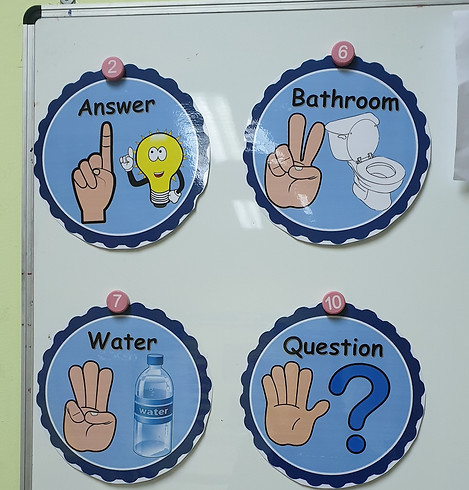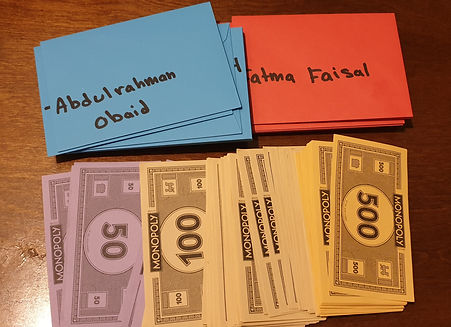Managing Learning
Page overview:
This page demonstrates my use of behavior management strategies to manage learning and students' behavior in the classroom.
Definition
Managing learning is defined as a way to establish a respectful, positive, nurturing learning environment (Nessipbayeva, 2012). In order to achieve such a classroom, teachers learn to apply various strategies in the classroom and train students to follow instructions.
Managing Behavior
Voice Levels

Description
Each level on the chart indicates a specific voice level, and when the light above it is on, it means students must comply with that voice level. The aim was to increase students’ awareness of what voice-level they should be using during different activities. This was a strategy I used to develop my behavior management skills.
Rationale
Guiding students in letting them know what the appropriate levels are will bring upon long-term benefits. Once students have gotten accustomed to the appropriate levels of voice, the teacher will not have to shout over their voices to quiet them down (Roffey, 2018). I believe that when the teacher acts in a calm manner, students follow suit. Thus, teachers should act in the same manner in which they expect learners to behave.
Hand Signals

Description
The hand signals serve as a method to eliminate excessive talking through an implicit behavior management technique of having students provide the teacher with their requests by making numbers with their fingers.
Rationale
Making use of signals has a good effect on students' behavior, and it helps to deal with disruption in the classroom (Roffey, 2018). Using signals is also indicative of mutual understanding through communication between the teacher and student. This strategy improved my ability to manage students' behavior because there was a routine they had to follow and so there are less interruptions due to needing to use the bathroom or borrow something from a friend.
Reinforcing Rules
Online Participation Rules
Description
Positive Reinforcement
Rewards


When I started online teaching, students were very inactive and many of them did not answer when I called their names. Therefore, I created powerpoint slides regarding the participation rules, which I reinforced during every lesson. Consequently, there was an increase in student participation. My third professional development plan goal was to use reflective writing to improve my practices and this assessment strategy was a result of writing action plans as shown in the following page.
Link to goal:
Rationale
Based on behaviorist B.F. Skinner’s theory of reinforcement, it is believed that using positive reinforcement increases the likeliness of rules being followed (O. Omomia & T.A. Omomia, 2014). After dealing with many students and classrooms, I found that the most effective strategy is one that involves rewards and positive reinforcement.
Description
Description
This strategy worked as a reward system in which students received money in their individual envelopes when they displayed good behavior, and had money removed if they misbehaved.
Another strategy was to add stamps on students' envelopes whenever they answered correctly.
Online Reward System

Description
Even through distance learning, it is important to encourage students and motivate them with the use of a reward system. The ministry's smart learning gate contains badges for different kinds of behavior. When students show good deeds, cooperate, think critically or demonstrate any other skill, they receive badges. Having badges that target different areas motivates learners further to try out new things.
Rationale
Stronge, Tucker, and Hindman (2004) explain that management mustn't be used to control students' behavior, but rather to manage it in a positive manner. In other words, building a positive classroom environment will inevitably lead to good behavior (n.p.). Another aspect that I believe is important when managing behavior is giving immediate feedback to correct certain unwanted behaviors. Part of my philosophy encourages the use of feedback to students.
References
Nessipbayeva, O. (2012). The competencies of the modern teacher.
Omomia, O. A., & Omomia, T. A. (2014). Relevance of Skinner's theory of
reinforcement on effective school evaluaution and management [PDF].
European Journal of Psychological Studies, 4(4), 174-180.
https://doi.org/10.13187/ejps.2014.4.174
Roffey, S. (2018). The secondary behaviour cookbook : strategies at your
fingertips.
Stronge, J. H., Tucker, P. D., & Hindman, J. L. (2004). Handbook for qualities
of effective teachers. http://www.ascd.org/publications/books/104135/
chapters/Classroom-Management-and-Organization.aspx

